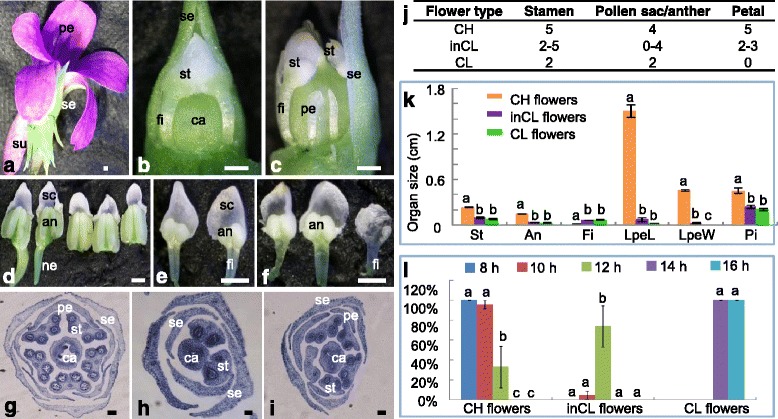Fig. 1.

Floral morphological variations under different photoperiods in V. philippica. a CH flower. b CL flower. c inCL flower. d CH flower stamens. Five stamens with invisible filament develop, showing distinct nectar glands. e CL flower stamens. Only two stamens with visible filament develop. f inCL flower stamens. Three to five stamens develop with visible filaments. g-i The cross sections of flowers. g CH flowers. Five stamens and five petals are observed. Each stamen has four pollen sacs. h CL flowers. Two stamens and no petal are detected. Each stamen has two pollen sacs. i inCL flowers. Two to three petals, and two to five stamens develop in these flowers. Each stamen has zero to four pollen sacs. The microsporogenesis in some stamens is inhibited. Bars = 500 um (a–f). Bars = 200 um (g and i), 100 um (h). se, sepal; pe, petal; su, spur; st, stamen; ca, carpel; an, anther; sc, stamen cap; fi, filament; ne, nectar gland. j Variations in the number of floral organs. k Variations in floral organ size. The length of stamens (St), anthers (An), filaments (Fi), lower petals (LpeL), and pistils (Pi), and the width of lower petals (LpeW) are measured. l The CH-CL floral transition under different photoperiods. Standard errors are provided and lower-case letters (a, b, and c) indicate significant differences (P < 0.05)
